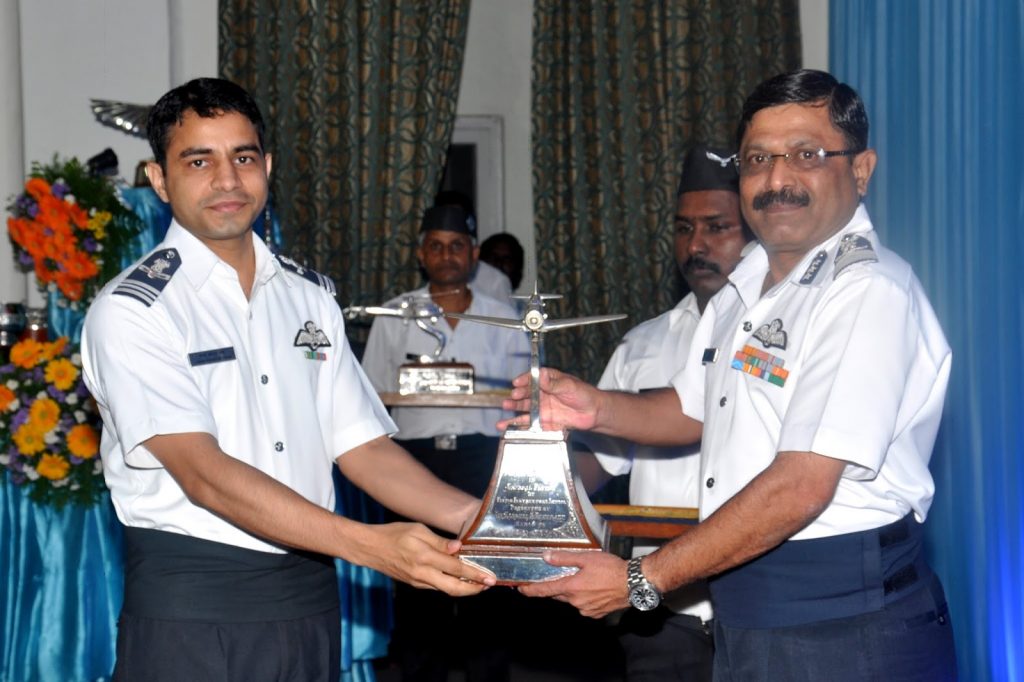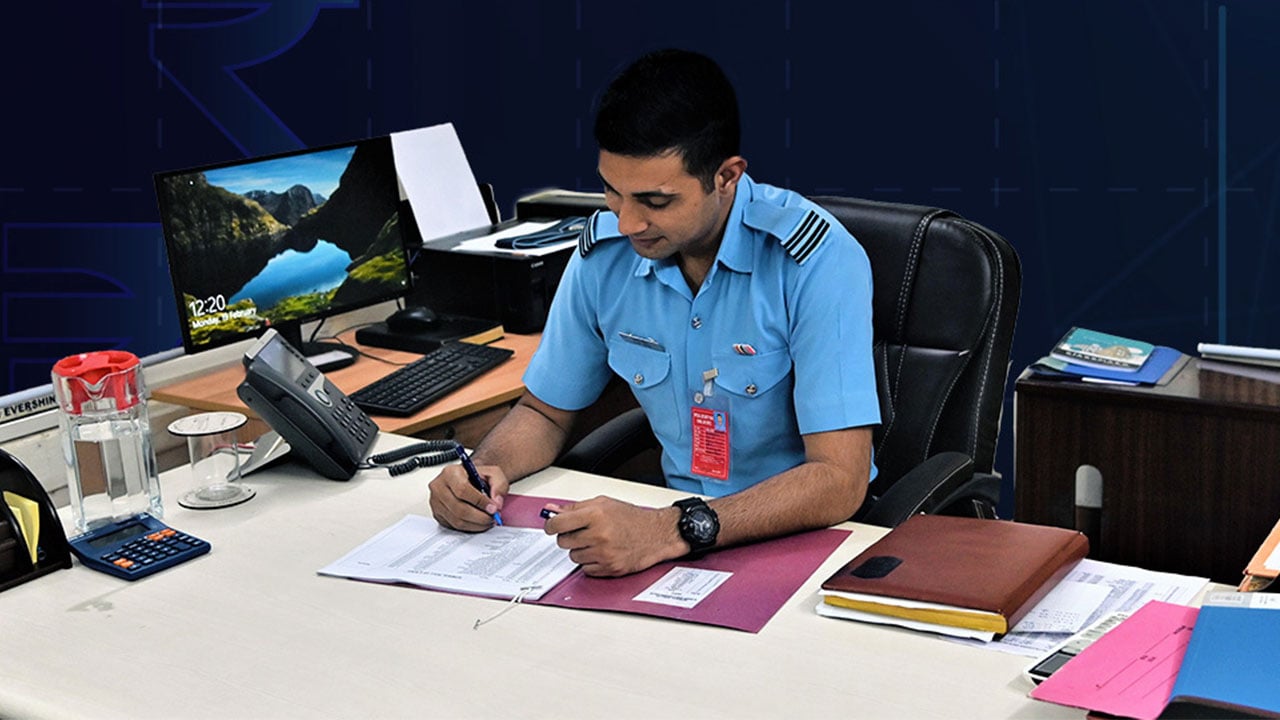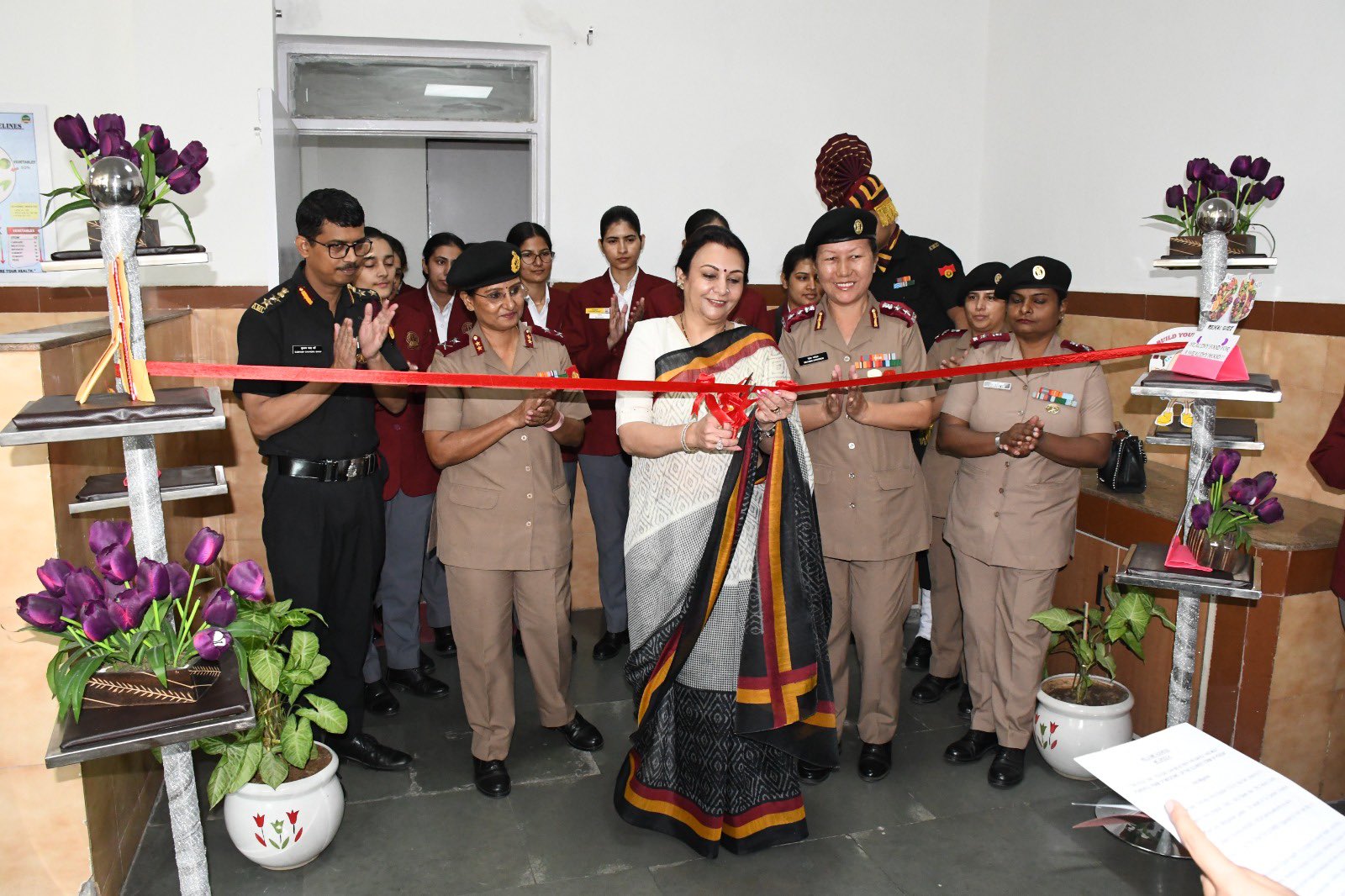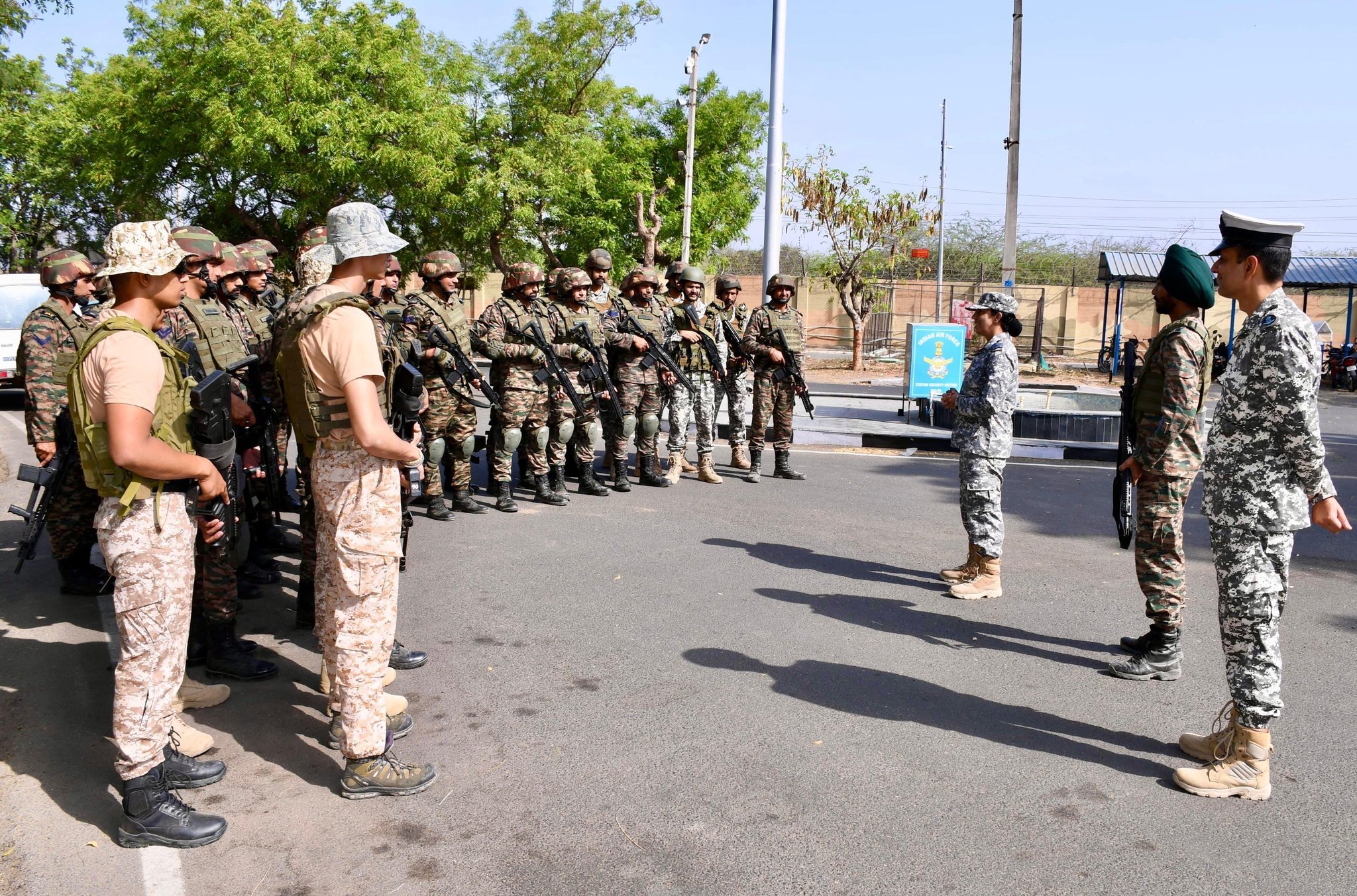Jai Hind future warriors, today we are going to look at some of the training institutes of the Indian Air Force.
1. Air Force Academy
Air Force Academy (AFA), the premier Training centre of the Indian Air Force, is the cradle of training for pilots, ground duty and technical officers of IAF. This academy represents the culmination and fruition of a long felt need to have training for officers of all branches in a single institution.
- The Air Force Academy formally came into being when the then President of India Dr Zakir Hussain, laid the foundation stone of the edifice on 11 October 1967. The Academy was a vision that sought to concentrate most of the ab-initio officer training of the IAF under one roof.
- The training at this academy is designed to foster the spirit of camaraderie and promote healthy interaction among officers of every branch. The academy aims to cultivate honour and integrity in every cadet and strives to graduate Air Warriors worthy of the Indian Air Force.
- The mission of AFA is to inspire and transform outstanding young men and women into courageous, dynamic, intellectual and cultured young Air Warriors; motivated to lead one of the leading aerospace forces of the world in service to the nation
- The training at the Air Force Academy is designed to inculcate moral values, leadership qualities, sense of honour and duty, mental and physical prowess, a spirit of adventure and the will to win, in the Flight Cadets. This is achieved by training in character building, discipline, military and academic subjects, physical exercise, drill, sports and adventure activities. The underlying theme of activity at the Academy is camaraderie and team spirit and a commitment to excellence. Duty, honour, integrity and self esteem are stressed upon during each stage of training; because these are important abstract qualities to be imbibed by every Flight Cadet. The curriculum and syllabi keep pace with current doctrines and technological developments, allowing the cadets at the same time to imbibe the basic principles / tenets of the military profession.
2. College of Air Warfare
The College of Air Warfare (CAW) came into being on 01 July 1959, as the School of Land and Air Warfare (SLAW), at New Delhi, after receiving its approval by the President of India (Est. No. 2164 A). The SLAW was formally inaugurated by Defence minister, Sri VK Krishna Menon on 03 September 1959 with the commencement of its first regular course.
- Mission:
- To evolve the process of learning of air war and promote co-operation in conduct of air operations that leads to effective and efficient utilisation of air power strategy.
- Role:
- To assist in development of Air Force doctrines, concepts and strategy.
- To study and teach ‘Air Power’ and conduct training in concepts of Air Warfare.
- To conduct training in Joint Air Operations for officers of Army, Navy and Air Force.
- To conduct computer aided War-Games of the Air War.
- To establish and maintain liaison with similar organisations in the other countries.
- To impart training to junior and middle level officers of the Indian Air Force in leadership and behavioural sciences, so as to improve their qualities of leadership and man management.
- To research, compile and publish books on IAF Personalities, Institutions, Campaigns and Squadrons
3. Air Force Technical College (AFTC)
Air Force Technical College (AFTC) was established on 04 Jul 1949, in collaboration with Air Service Training Corps, Hamble, UK, with Gp Capt J Beaumont DFC as the first Commandant. The College was then named “Technical Training College” (TTC). The first Direct Entry Officers (DEO) Course comprising of 34 students graduated from TTC on 22 Jan 51, after 66 weeks of training. During the initial years (1949-1962), in addition to courses for Direct entry officers (DEO), the apprentice training was also being conducted at AFTC. TTC was renamed as AFTC on 01 January 1957, with Gp Capt MJ Kriplani MBE as the first Indian Commandant of the College.
- The crest of the College depicts a mechanical gear and emanating electrical waves superimposed by torch bearing an eternal flame. The President of India approved the crest on 08 Aug 62. The crest symbolises the flame of knowledge, which gives rise to the fraternity of mechanical and electronics professionals engaged in pursuit of excellence in aeronautical engineering. The motto printed on the crest ‘Gyanen Shobhamahe’ means ‘it is knowledge through which we find pride in ourselves’. With its multi-faceted growth, the College has lived up to its motto and continues to impart high standards of training to military Aeronautical Engineers. The College was awarded the “Presidential Colors’ ‘ by Smt Pratibha Patil, the President of India on 12 Nov 08
- The aim of the College is “To educate and train engineers from various disciplines on current technologies of aircraft, weapon and support systems held in the IAF and also to instil qualities of military leadership, managerial skills, values and ethos of an Air Warrior, to enable them to function effectively as Aeronautical Engineers and development as members of officer cadre of IAF”. The directing staff at College are specialists in their respective fields and most of them are Ph D/ M Tech/ M Sc from IITs, IISc, DIAT and other reputed institutes. Today, the college is a Category-A Training Establishment and awards M Tech in Aeronautical Engineering to officers graduating after ab-initio training.
- Click Here For More details: What Is Air Force Technical College – AFTC
4. Air Force Administrative College
The aim of the College is to impart advanced training to the officers in various branches of the IAF and perfect their knowledge & skill so as to enable them to handle their duties independently in their respective branches.
- The officers graduating from this college proudly carry the lessons of success, positive bearing and confidence endowed in them. So far about more than a lakh Indian officers have been trained in this College. Apart from training the IAF officers, this college is also engaged in the training of officers from other defence services and foreign nationals of friendly countries drawn from Myanmar (erstwhile Burma), Indonesia, UAE, Qatar and Sri Lanka. So far, more than 12,000 foreign officers from these countries have been trained at his college.
- The College has won laurels and applause from all quarters. The President of India, Sri KR Narayanan presented the Colours in October 2000.

5. Flying Instructor’s School
The crest of Flying Instructors’ School depicts a torch with an open fist, signifying knowledge imparted and passed on by a flying instructor, and a clenched fist held upright, depicting an under trainee receiving the same. The wings depict aviation.
- The motto is ‘VIDYA DANEN VARDHATE ” which signifies that ‘Knowledge when imparted multiplies’. This has been taken from Kautilya’s ‘ARTHASATRA’, the oldest book of Sanskrit literature.
- This is the guiding principle of the teaching learning process at the Flying Instructors’ School.
- FIS is tasked to impart quality training to experienced pilots and mould them into dedicated and extremely skilled flying instructors.
- At FIS, the flying skills and professional knowledge of these U/T QFIs are honed to enable them to undertake the arduous task of imparting flying training more effectively and efficiently.
- The QFIs who successfully graduate from FIS are entrusted with the responsibility of training ab-initio pilots at flying training establishments and moulding them into future Air Warriors. Subsequently at the operational units, these specialists would impart training to aircrew in various roles that the unit is entrusted to perform.
- It is to the credit of the School and its staff, past and present, that it has also successfully integrated the training of officers from the sister services and friendly foreign nations.
6. The Institute of Aerospace Medicine
The Institute of Aerospace Medicine established the Internal Quality Assurance Cell (IQAC) in March 2011. The IQAC has since been an integral part of the Institute which works towards realizing the goals of quality enhancement by developing a system for conscious, consistent and catalytic improvement in different aspects of the functioning of the Institute. The following are the functions of the IQAC:-
- Development and application of quality benchmarks/ parameters for various academic and administrative activities of the institution.
- Facilitating the creation of a learner-centric environment conducive to quality education and faculty maturation to adopt the required knowledge and technology for participatory teaching and learning process.
- Arrangement for feedback response from students on quality-related institutional processes.
- Documentation of the various programmes/ activities leading to quality improvement.
- Acting as a nodal agency of the Institution for coordinating quality-related activities, including adoption and dissemination of best practices.
- Development of Quality Culture in the institution.
- Preparation of the Annual Quality Assurance Report (AQAR) as per guidelines and parameters of NAAC, to be submitted to NAAC.
- IQAC happens to be one of the important components of the college which ensures quality and continuous improvement in all the units/ aspects of the college.

7. Airmen Training School
A Non-Technical Training Centre for airmen recruits was set up at Lahore in 1943 and then shifted to Hyderabad in the same year. It was renamed as No.1 Ground Training School. The school was shifted to Jalahalli in 1947 . The airfield camp at Sambra, Belagavi was initially set up by the Royal Air Force in 1942. After Independence, the camp and other assets were taken over by the Central Public Works Department. When No 1 Ground Training School (GTS) was relocated from Jalahali, Bangalore to Sambra Belgaum in 1962, the assets of the camp were transferred to the IAF. No 1 Ground Training School (GTS) . In 1980, it was renamed as Administrative Training Institute (ATI).
- ATI was shifted to Air Force Station Tambaram in November 2001 and renamed as Airmen Training School (ATS) on 05 Dec 01, purely dedicated for Joint Basic Phase Training of all ab-initio trainees of the Air Force. Thereafter with effect from 20 Oct 2004, ATS was numbered as 405 Air Force Station, Belagavi.
- Like technical trades, the training of non-technical trades were restructured in 2000 and 2004. The non-technical training institutions were reorganized in 2005. Presently, the different institutions which conduct training of airmen of non-technical trades are the Basic Training Institute, Non-Technical Training Institute, Air Force School of Physical Fitness, Air Force Police & Security Training Institute and Medical Training Centre.
Conclusion
Hope this post was informative for you. For more such posts related to defence exams and SSB Interview stay tuned.
Want To Join Indian Air Force and Prepare For The AFCAT Exam?
- You can prepare for AFCAT 2022 and AFCAT 2023
- Take the best AFCAT Exam Online Course by SSBCrackExams.
- Take the AFCAT Exam Mock Test Series to boost your prep.
- To Crack AFSB & SSB Interview ENROLL NOW: SSB INTERVIEW ONLINE COURSE
Also Read:
























I don’t know in this course and training please elaborate me